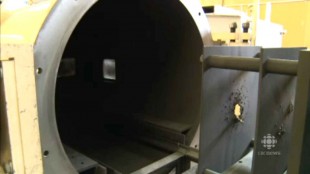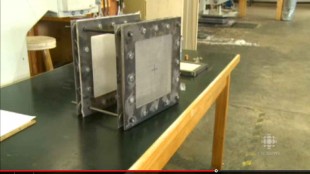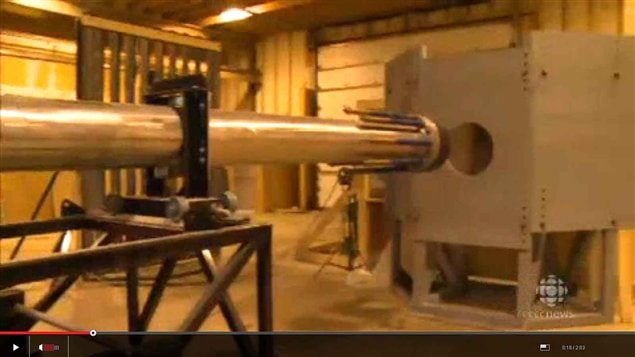At the Planetary and Space Science Centre at the University of New Brunswick, in eastern Canada, some big impacts are taking place.

A section of the gas-gun equipment showing materials removed from the chamber end which have been hit by tiny obstacles fired at hypersonic speed.. The guns themselves are smaller than the “bird” gun but are designed to simulate impacts by tiny particles or objects which may strike spacecraft
The ballistics facility in Fredericton has special guns, including light gas guns, that can shoot projectiles at up to hypersonic speeds. It’s all in an effort to gather data on materials to better protect jet planes, military equipment, and even spacecraft.
In some cases, a large gun shoots ballistic jelly at high speeds against airplane materials, like cockpit glass for example or engine materials, to simulate bird strikes.
But the light gas guns can hurdle small and tiny projectiles up to tens of kilometers per second.
With all kinds of junk orbiting the earth from various space launches to tiny micro meterorites the size of a grain of sand all travelling at enormous speeds, any of them could prove deadly to a spacecraft or astronaut.
The centre is testing multi-layer armour combining extremely light weight woven mesh and plates.
“We have multiple layers of these such that the tiny projectiles are progressively fragmented and decelerated such that they don’t hit the main body of the spacecraft,” says John Spray, director of the space science centre.

null
UNB researchers are testing layers of lightweight armour of plates and mesh to prevent penetration into a spacecraft © CBC
The next step is create armour material that not only protects who and what is inside the craft, but which is actually self repairing.
The scientists at the facility say that development will be helped along thanks to the thousands of test firings made at this unique Canadian facility.







For reasons beyond our control, and for an undetermined period of time, our comment section is now closed. However, our social networks remain open to your contributions.